Xiaomi Redmi Note 6 Pro Review : The king, dethroned
The Xiaomi Redmi Note 6 Pro, despite being a reliable device, isn't the best smartphone in the mid-range segment anymore. Xiaomi frankly borrowed a leaf out of OnePlus' book and refined the popular Redmi Note 5 Pro, and didn't really upgrade it. And in the mid-range segment where loyalties shift with a bump in megapixels or RAM, the Redmi Note 6 Pro could be threatened by other, more powerful devices in that category. Read on to find out why.
With the Xiaomi Redmi Note 6 Pro, Xiaomi has done something that OnePlus is known to do. Xiaomi refreshed it’s best-selling offering in a short span of time, improving upon the usability with new software-based features, while leaving out a notable hardware upgrade. While that has worked out well for OnePlus so far in the high-end segment, the mid-range category is a whole different story. With the likes of the Realme 2 Pro, the Moto One Power, and Xiaomi’s own Mi A2 for company in that segment, the Redmi Note 6 Pro has a tough road ahead to glory.
Will its follow-up, the Redmi Note 6 Pro live up to the same hype? More importantly, is it still the high performer? Let’s find out.
Design
The Redmi Note 6 Pro is basically the old Note 5 Pro, but with a notch cut-out in the display. As ugly as the notch looks, Xiaomi gave in to the growing demand of a larger, bezel-less display and the notch was the only way to give the people what they wanted. It doesn’t really help things here as the notch is rather wide and offers little space on either sides for icons and notifications. It’s also quite pesky and refuses to go if you’re playing a game like PubG unless you manually turn it off. The notch is present while you’re reading an article and but not when you’re watching a video on YouTube.
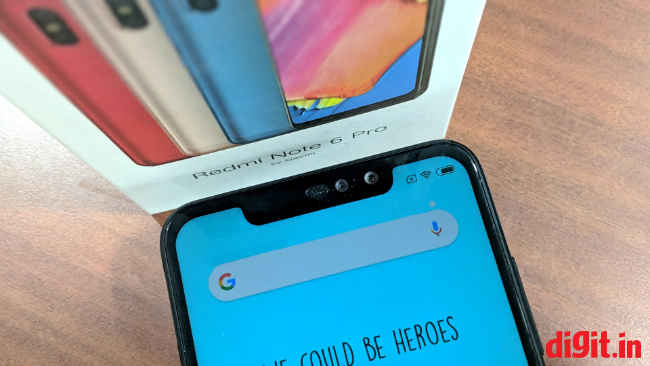
Hello notch, my old friend!
Xiaomi’s design philosophy was once appreciated and even copied across the segment. One of the primary proponents of the metal-body design in the price-range, Xiaomi’s Redmi Note series popularised the design cues that are now present in almost all Xiaomi phones in the budget and mid-range segment. The company does experiment with other materials like ceramic in its flagship products and even kevlar like it did in the Poco F1. I can safely say the metal body design now looks plain boring. Heck, it’s now difficult to tell one Xiaomi phone apart from the other if you’re looking at them from the back. Despite that, one has to admit that these metal-bodied phones are anyday more durable than your glass-sandwich ones even though the latter looks much, much better. You’re anyway going to slap a case on it and if that’s the case, there’s no point calling Xiaomi out for using a recurring design if it’s made to last. But then, the Redmi Note 5 Pro unit we had received for review, doesn’t work all that well now. The power button on the right needs to be pressed harder to have it register. Hopefully, the Redmi Note 6 Pro has better internal construction and durability.
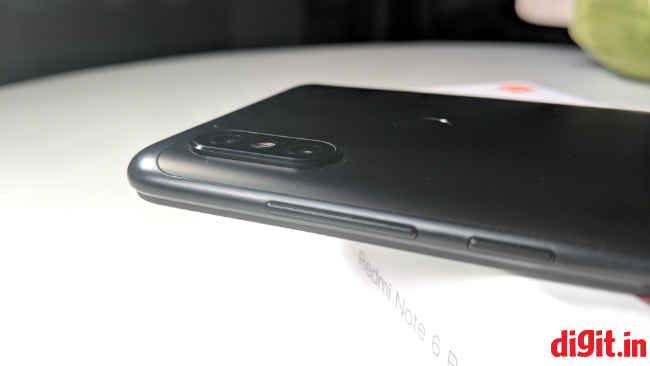
The side bulges are the only thing distinctive in the design
While there’s hardly any major difference in the design of the Redmi Note 6 Pro, Xiaomi did introduce slightly curved edges on the back, with sides that bulge out from the body. It does help in gripping the phone better. The rounded corners also doesn’t let the phone dig into the palm. The dual-camera unit on the back is aligned vertically on the top left corner with the fingerprint sensor located centrally, right where the index finger can reach. The Redmi Note 6 Pro also shaved off the bezels from below, but only by a hair and unless you’re comparing the Note 6 Pro against the Note 5 Pro side-by-side, there’s no way to tell. It’s quite a big bezel though and phones like the Honor 8X are honestly a better alternative if a bezel-less display is what you’re looking for in a phone.
I have mixed feelings about the Redmi Note 6 Pro’s design. At the fag end of the year, after using a bunch of Xiaomi devices that look all the same, I’ve grown tired of the reiteration. However, it’s durable and can take more scratches and bumps than a glass-bodied phone, and that should be a priority in the mid-range segment.
Display
This is where the Redmi Note 6 Pro primarily differs from the Redmi Note 5 Pro. The Note 6 Pro sports a larger 6.26-inch display that has an ugly notch on top, which is how Xiaomi increased the screen size without increasing the footprint of the phone. However, most of the extra screen real-estate is eaten up by the notch itself, and there’s hardly any space for the icons and notifications. The phone does offer the option to turn the notch off, but you have to do it manually by whitelisting apps. Videos are cut out in 16:9 aspect ratio by default and in apps like YouTube you can stretch it to 18:9 aspect ratio, but there will still be space left unused. The notch, like we have mentioned countless times, serves no purpose whatsoever, and should just go.
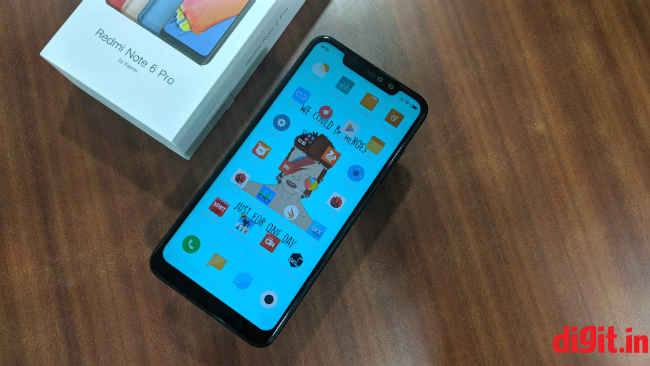
Colours on the Redmi Note 6 Pro are a little more vibrant
Apart from that, the panel on the Redmi Note 6 Pro is of a higher quality than it’s predecessor. While the brightness levels are more or less the same (500 lux), colours are more vibrant and crisp on this one. The phone also offers options to tweak the white balance and colour temperature, but if you don’t know what you're doing, it’s better to maintain the default settings.
Performance and Software
This is where there’s hardly any difference in between the Redmi Note 6 Pro and it’s predecessor. All other Redmi Note phone have outperformed their respective predecessors in both benchmark tests and in real-world usage, but not this one. The Redmi Note 6 Pro relies on the same Snapdragon 636 SoC coupled with either 4GB or 6GB RAM, along with 64GB storage. While the hardware configuration did excite us in the beginning of the year, by the end of 2018, it has become the standard. The Snapdragon 636, with it’s eight Kryo 260 cores clocked at 1.8GHz, is now aging quickly in the face of the Snapdragon 660 and the Kirin 710 being offered in the same price. The benchmark reports corroborate that.
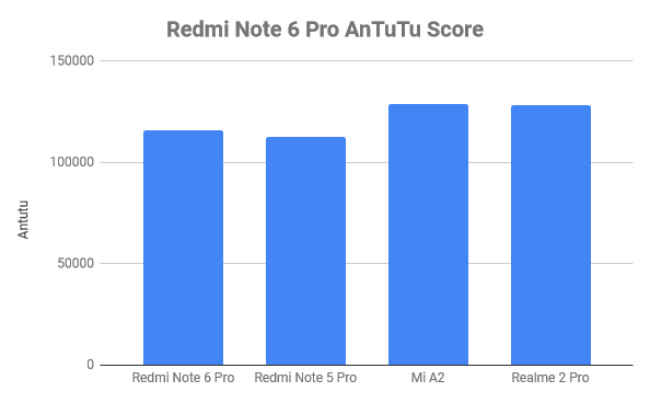
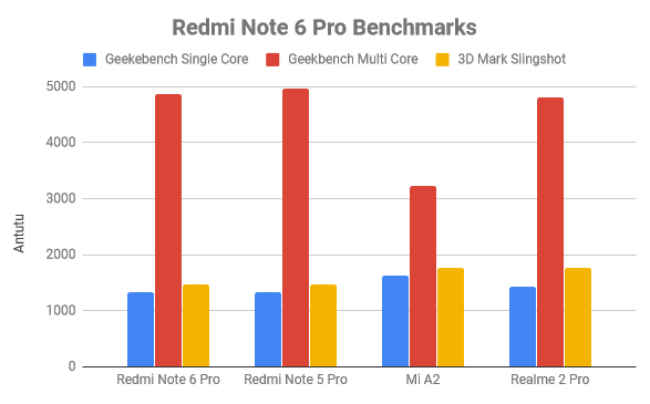
On AnTuTu, the Redmi Note 6 Pro scored 116046 against the Redmi Note 5 Pro’s 112652, while the Realme 2 Pro with a Snapdragon 660 outscored both of them with 128430 and the Mi A2 trumped even that score with 128895. With similar price points, it becomes an easy choice if you’re looking for the best performance. On Geekbench Single Core and Multi Core tests that puts the CPU capabilities to test, the Redmi Note 6 Pro scored 1632 and 3233 respectively. The scores are once again in line with the Redmi Note 5 Pro and the Asus Zenfone Max Pro M1 and here again, the Realme 2 Pro and the Mi A2 outperformed the Note 6 Pro with significantly higher scores. Even on 3DMark Slingshot, which tests the graphics processing capabilities of a device, the scores are similar for both the Redmi Note 6 Pro and it’s predecessor while the Mi A2 and the Realme 2 Pro outscored it by a long margin.
Based on the performance benchmark scores, it’s easy to see that the Redmi Note 6 Pro is not the best Xiaomi has to offer in that price. The Mi A2, with the Snapdragon 660 SoC and Android One-certified stock Android UI is what we would recommend, but if you’re married to the MIUI ecosystem, the Redmi Note 6 Pro is your next best option.
In real-world usage, the difference in performance isn’t all that much. The phone runs MIUI 10 out of the box and it’s optimised brilliantly for the phone. I didn’t face any lag or stutter while opening apps, or browsing the internet. However, the MIUI 10 interface on this phone is based on Android 8.1 Oreo and not the latest Android version. The new update brings gesture-based navigation and a new recent apps menu which is more card-based and arranged vertically. There’s support for autofill now, and a new app management system in Settings. More than that, MIUI feels fast and snappy with quick animations. The phone also boots quickly in around 30 seconds and apps launch slightly faster than the Note 5 Pro.

PubG Mobile is playable on this phone
Gaming on the Redmi Note 6 Pro is not the best experience. Most games will run although the graphically-demanding ones have to be played in low or medium settings. We played PubG Mobile on the Redmi Note 6 Pro with GameBench plugged in, and it recorded a stable FPS of 25. On flagships like the OnePlus 6T, you get around 40 FPS. While FPS count isn’t as much as what flagships offer, you do get stable gameplay with a variability index of 1 FPS on an average across five sessions we tested.
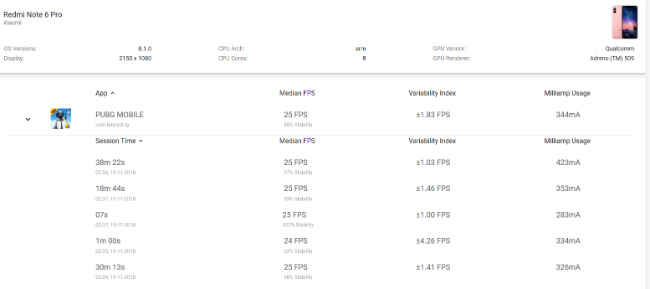
Courtesy: Gamebench
It goes without saying that even though this isn’t the fastest phone in the mid-range segment by any means, it’s fairly reliable and functional and will not let you down.
Camera
The Redmi Note 6 Pro while not offering any upgrades in raw performance, ups the ante when it comes to imaging. The phone’s dual camera unit at the back is better thanks to a bigger sensor with larger 1.4um pixels and a wider f/1.9 aperture as compared to that on the Redmi Note 5 Pro. On the front, inside that ugly notch are two sensors as well for selfies. The secondary sensor, like that on the rear, is used for calculating the depth of field.
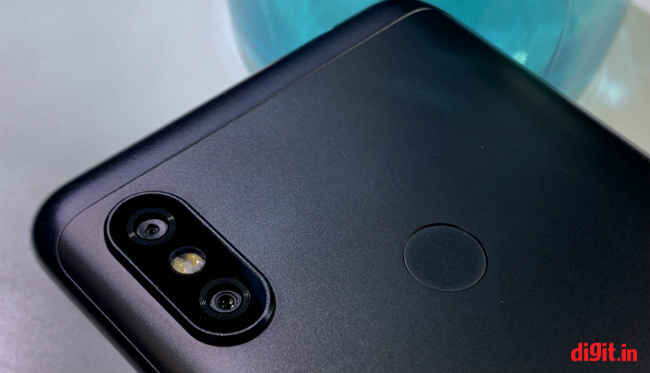
12+5MP dual camera with bigger sensors and wider aperture
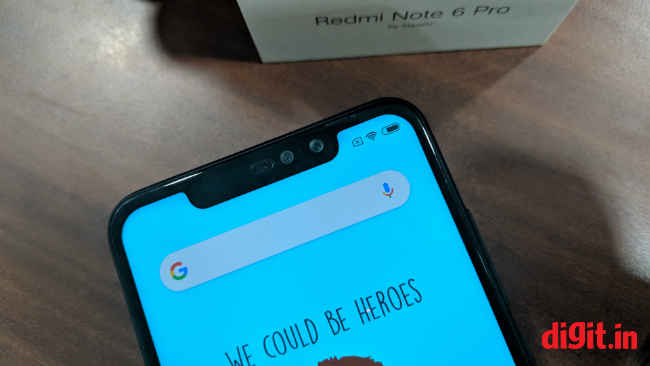
The notch houses dual front cameras
The camera on the Redmi Note 6 Pro is much better than the Redmi Note 5 Pro’s. In the day as well as in low-light, the Redmi Note 6 Pro takes images that are aesthetically pleasing. The camera relies on machine learning to recognise scenes across 32 categories including buildings, greenery, animals, people, etc. The AI mode is turned off by default and once you turn it on, it automatically recognises what you’re shooting within 1-2 seconds, but what it’s actually doing after recognising is not clear. In some instances, like shooting foliage, the greens do look more vibrant while low-light photos are processed using noise-reduction algorithms. But there’s no real clarity on what the AI is doing in reality. But to cut things short, the Redmi Note 6 Pro can take good photos that are sharp, vibrant and are visually appealing.
Camera Samples:
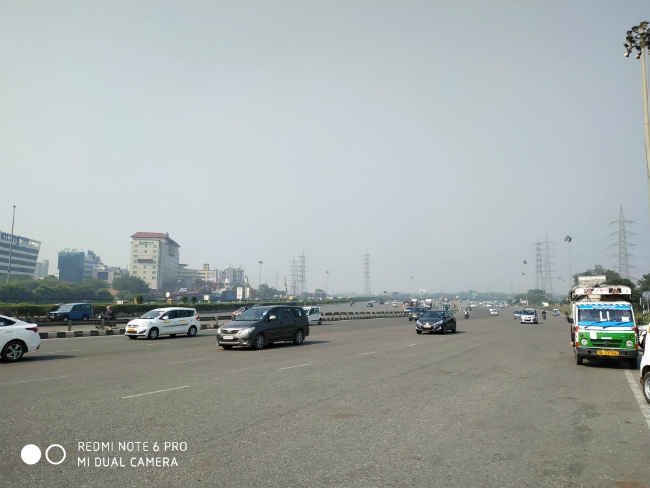
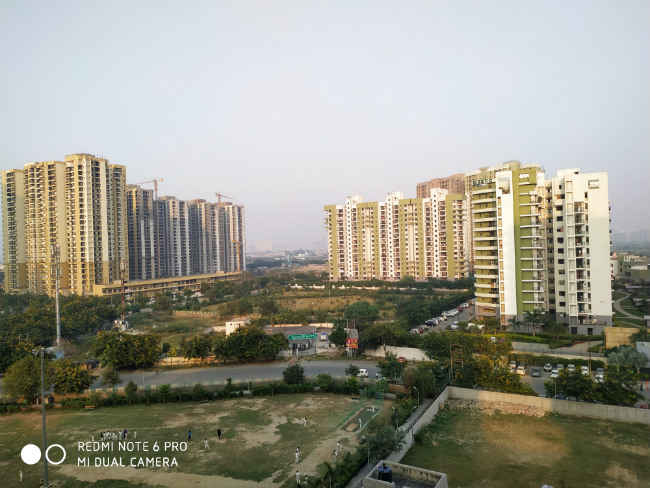

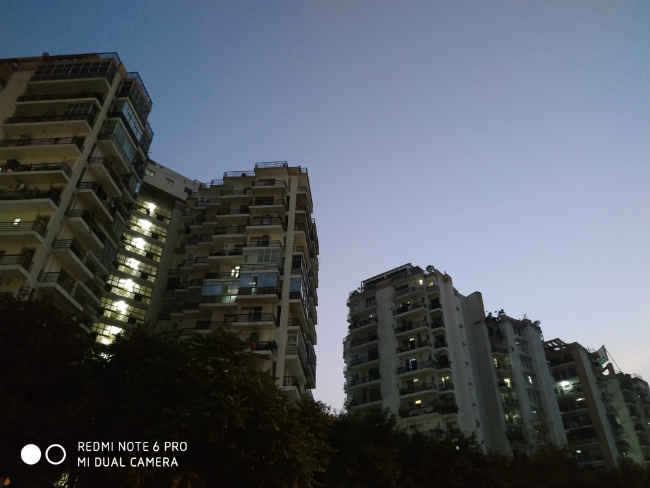
For more image samples, check out our Flickr Gallery.
We did an article after testing the camera extensively where we concluded the camera on the Redmi Note 6 Pro is more than capable of taking good photos, and is much better than that on the Redmi Note 5 Pro. But the Mi A2 trumps it in low-light with its pixel-binning technique. The Note 6 Pro applies the same technique for selfies with its 20+2MP front camera and the selfies do come out better in low-light because of it.


Further, the Note 6 Pro offers a new experience of portrait mode with dynamic bokeh. The blurred part warps into different shapes and if you ask me, I found them pretty cool. The phone also has various lighting effects and thankfully, Xiaomi’s implementation works much better than what the Realme 2 Pro or the Honor 8X offers.
Overall, the Redmi Note 6 Pro’s primary claim to fame is the camera. That’s where most of the work has gone in developing the phone.
Battery
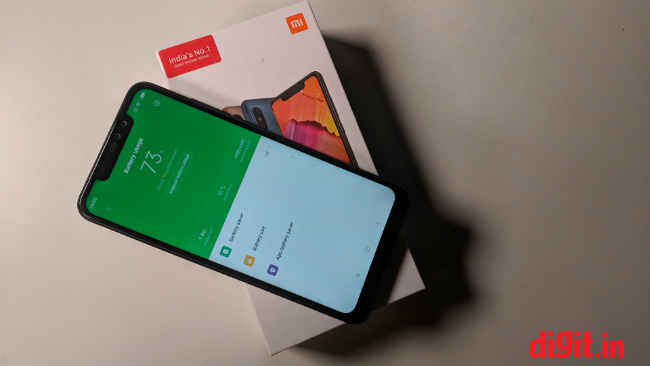
What a day-and-a-half battery life looks like
The Redmi Note 6 Pro with its 4,000mAh battery offers the same one and a half day battery life like its predecessor. While we would have liked a bigger battery on the phone like the Asus Zenfone Max Pro M1, this one is more than enough to last the entire day. What’s disappointing is that Xiaomi offers a 5V charger out of the box that can’t fast-charge the device. It still uses a micro-USB port to charge even when the Mi A2, offered at nearly the same price has a USB-Type C port. The battery drain while playing PubG was around 15 percent for a full 30-minute session which isn’t all that bad considering other phones also have similar drainage pattern.
Bottomline
The Redmi Note 6 Pro, like we noted before is no longer a leader in the mid-range segment. With underwhelming performance, and a lacklustre design, it’s now a follower. It’s still offers good value for your money though, it’s just not the best, which is what we expect from Redmi’s Note lineup anyway. The Note 6 Pro somewhat redeems itself with good imaging prowess, but if you’re looking for an out-and-out performer, the Realme 2 Pro or the Honor 8X are phones you can consider. Or if you have to stick to Xiaomi and can make do with stock Android, the Mi A2 is a no-brainer. To be frank, I couldn’t find a legit reason to recommend the Note 6 Pro apart from the high value for money. In the mid-range segment where spec-sheets rule the roost and design slowly getting noticed, Xiaomi could have spent a few more months and followed up the popular Redmi Note 5 Pro with a worthy successor.





